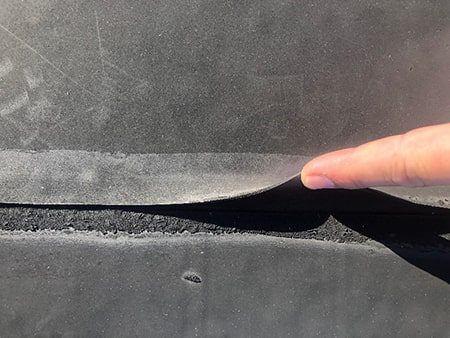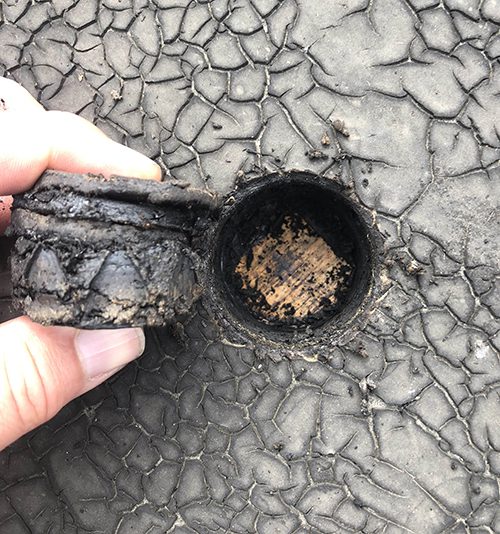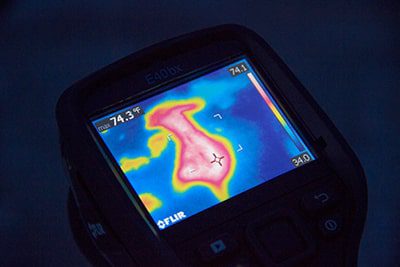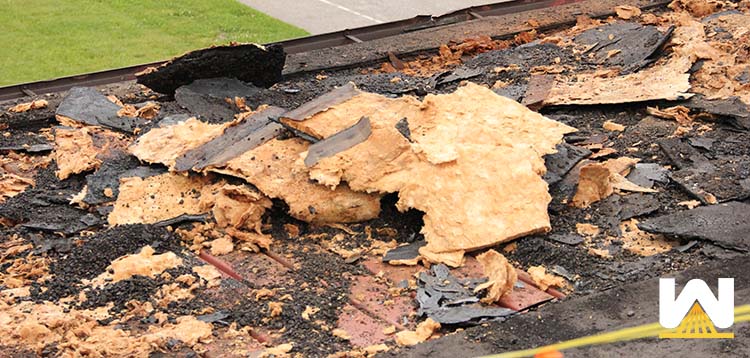Do you have roof leaks? If so, the most common way roofs leak is when the insulation gets wet (or saturated). That water eventually comes into the building.
It’s like a cloud getting darker and darker, filling with water until the cloud can’t hold it anymore. Once that happens, it rains!
In this article, you’ll learn:
- Why determining saturated roofing material is essential?
- How do roofing contractors identify wet roofing areas?
- What do contractors do once they identify it?
- Should you repair a roof that’s 10%, 20%, or 30+% saturated? Or should you do a tear-off?
And just so you know, West Roofing Systems has been in commercial roofing since 1979. One of the most critical aspects of installing sound roofing systems is identifying and replacing wet insulation. If you take anything away from this article, it’s this: You should never install a roofing system over wet insulation.
This article has been reviewed, edited, and approved for publishing by a commercial roofing expert with more than 30 years of experience.
Let’s get started!
Why is determining saturated roofing material necessary?
Having saturated roofing material is crucial because it’s evidence that your roof is leaking or it’s about to start leaking.
It’s been established that there’s a water entry point in the roofing membrane. That could be:
- A puncture in the membrane is allowing water into the insulation
- A penetration or flashing is failing, which is allowing water to come in
- A seam has lost adhesion, allowing a water entry point
- A screw, nail, or fastener has back out, allowing water access to the insulation
- Coating has worn out on a spray foam roof, allowing the foam to degrade; water enters the roof once all the foam degrades.

How do roofing contractors identify wet roofing areas?
Contractors identify wet insulation in two ways, by pulling core samples and doing an infrared inspection.
Pulling Core Samples

Since the insulation is below the membrane (the top layer of a roofing system), you need to take a core sample of the roof to see if the insulation is wet.
A contractor will take samples in areas that look to be good candidates for wet insulation. Mostly in low areas of the roof, places where there’s ponding water or evidence of damaged membrane.
How many core samples will the contractor take?
On average, a roofing contractor will take 1-2 core samples for every 10,000 sq. ft. of your roof.
Infrared Inspection
To get the most accurate determination of saturated insulation, roofing contractors will perform an infrared inspection.

An infrared inspection utilizes a special camera to recognize the difference between membrane and insulation temperature.
A roofer will walk around your roof after the sun has gone down. The reason is that the membrane will be cooling down, but the wet insulation can still be warm from the day’s heat.
When there’s a temperature difference, this is evidence of wet insulation.
If the insulation and membrane are at the same temperatures, there’s no evidence of wet insulation.
What do contractors do once they identify saturated insulation?
A good roofing contractor will remove all evidence of saturated insulation and replace them with similar material.
Some bad contractors out there will cut costs and roof over wet insulation.
DON’T DO THIS!!!
Roofing over wet insulation will cause problems down the line. The trapped water will go up or down, whatever the path of least resistance is.
It can evaporate and go up in the Summer, which causes blisters, backs out fasteners, and breaks seams apart.
If the water stays in your insulation through the Winter, it will freeze, and when it finally thaws, it will drip down into your building. Freezing water will expand, causing a more significant water entry point.
Should you repair a roof that’s 10%, 20%, or 30+% saturated?
The most common threshold is 25%.
If 20% of the roof is saturated, it’s worth repairing or restoring. If it’s 30% saturated, most contractors will recommend a complete tear-off and replacement.
Other factors can suggest a complete tear-off, even though your roof is under 25% saturated.
One factor is roof age.
If your rubber roof has a projected life of 25 years, and today it’s in year 23, then it’s not worth repairing, knowing in two years, you’ll likely need a full restore or complete tear-off.
Another factor is membrane and seam health. Are the seams losing adhesion? Has the sun dried out the membrane where there are signs of cracking? If any of these are true, it might be time for a tear-off or restoration.
Conclusion
Hopefully, you learned how contractors identify wet insulation: through core samples and infrared surveys.
And remember, never install a roof over wet insulation!
Here are some other articles you may be interested in:


